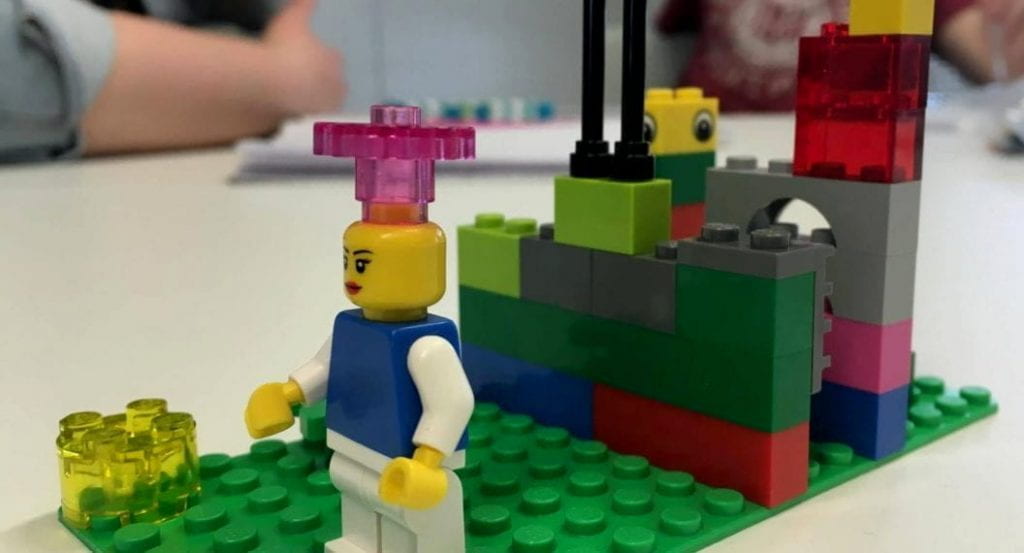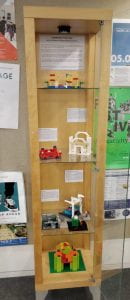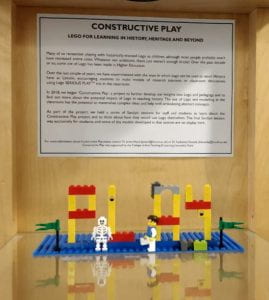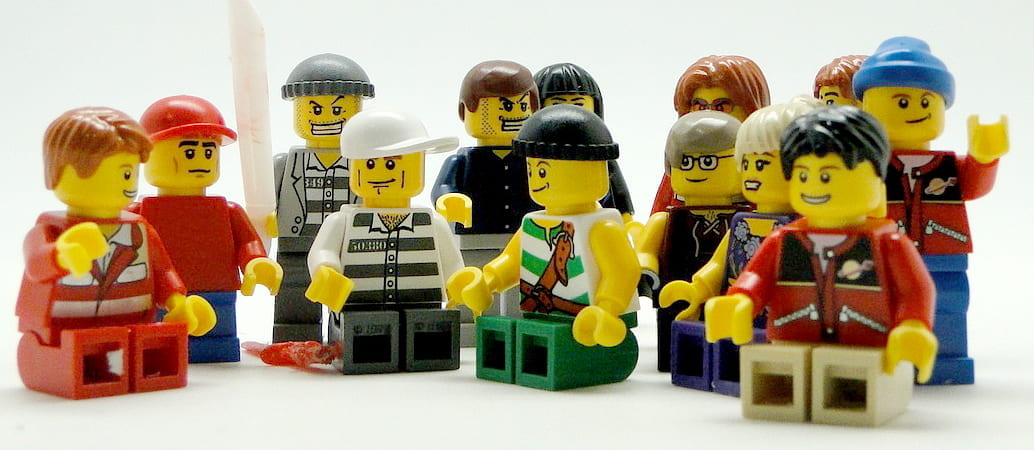Constructive Play: Lego for Learning in History, Heritage and Beyond
This project sought to explore the potential of play to support student learning in and beyond History & Heritage. The project team aimed to use Lego to address two related challenges faced by students within the discipline (and more broadly):
First, some students struggle to move from the specific details of their learning to more abstract thinking about how individual teaching sessions relate to the module as a whole (e.g. to assessment), or at the meta-level, even how modules add up to the year or programme of study. The results of the investigation so far suggest that Lego has real potential to enable students – particularly those who struggle to articulate their thoughts verbally – to move their thinking onto a more abstract and creative level.
Second, other students benefit from working physically with Lego, enabling them to visualise their learning in a very concrete way. It is believed that this will be particularly useful for subjects, which are by nature more focused on the visual and material world (e.g. art and architecture), but kinesthetic learners may benefit across the board from this approach.

Based on experiences of using Lego Serious Play in the School of History and Heritage over the past three years, the College of Arts Teaching & Learning Innovation Fund supported a series of sandpit sessions for staff and students. These sessions demonstrated the different approaches that could be adopted when using Lego, giving participants the opportunity to play with Lego and feedback. The team gathered ideas on how staff and students envisaged using Lego in their own teaching and learning activities, as well as their views on its potential benefits and drawbacks.
The students who attended the final sandpit session were asked, at the end of the event, to make a Lego model that represented a research project that they had done (or were going to do in future). They were asked to write a commentary of up to 100 words explaining what their model represented. The models and commentaries were then displayed in the Nicola de la Haye Building during the College of Arts Festival of Creativity in May/June 2019.



One colleague noted that ‘Everyone knows what Lego is so it immediately breaks down barriers’, while another stated that it was enjoyable and that the focus on Lego as an object might encourage mindfulness among students.
The project gathered a wide range of pedagogic ideas from colleagues, which they are sharing via our blog posts. These are summarised thematically as follows:
- starting and ending teaching sessions (icebreakers, stimulation, key ideas, introductions, summarising learning…)
- skill building (communication skills, developing teamwork…)
- abstract thinking (discussing abstract concepts, conceptual thinking…)
- creativity (layering ideas, developing creative skills…)
- reflecting, communicating, making learning explicit (explaining ideas, confirming understanding, making the complex simple…)
- project planning & development (planning a dissertation, unpicking stress and anxiety of learning …)
- possible issues (not taken seriously, risk of over-use, problems with starting, ‘non-creative’ students…)



The project team are continuing to blog about their activities and learnings developed from this exciting project.

